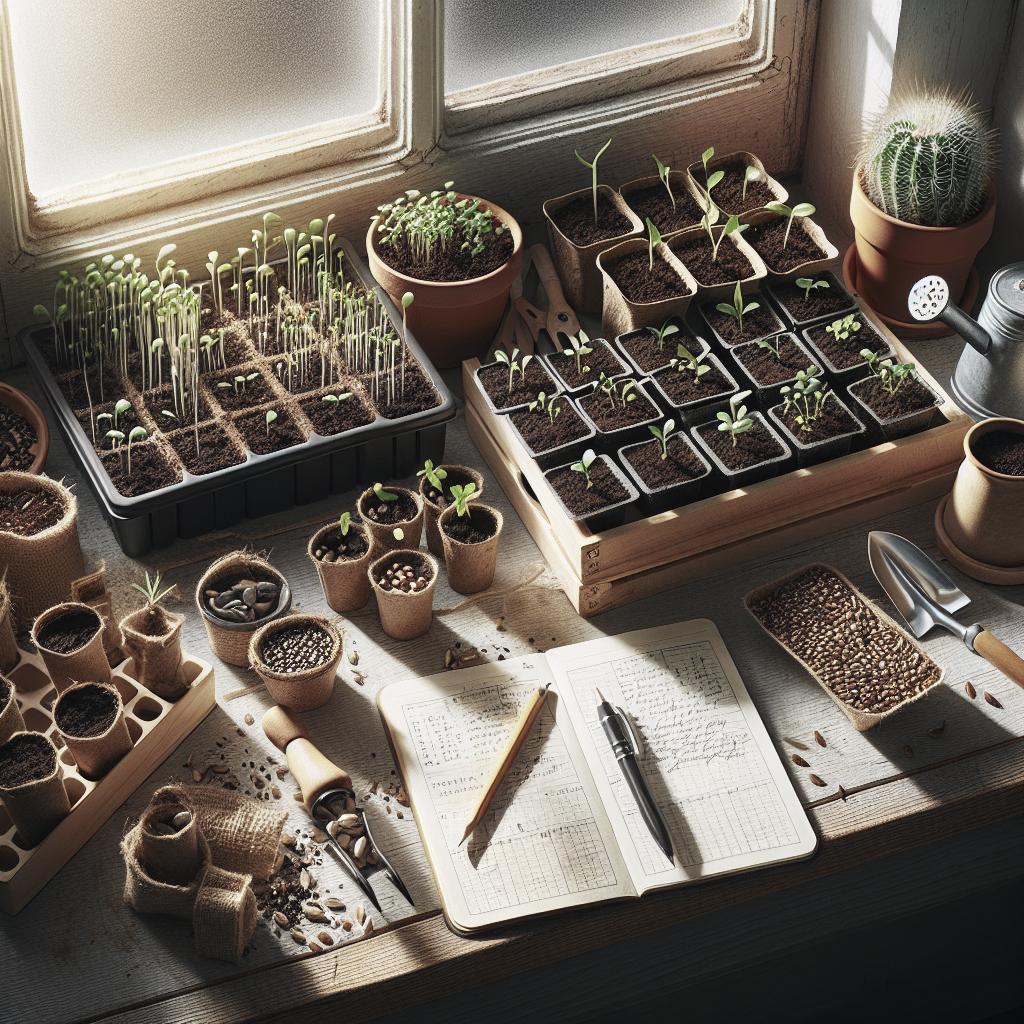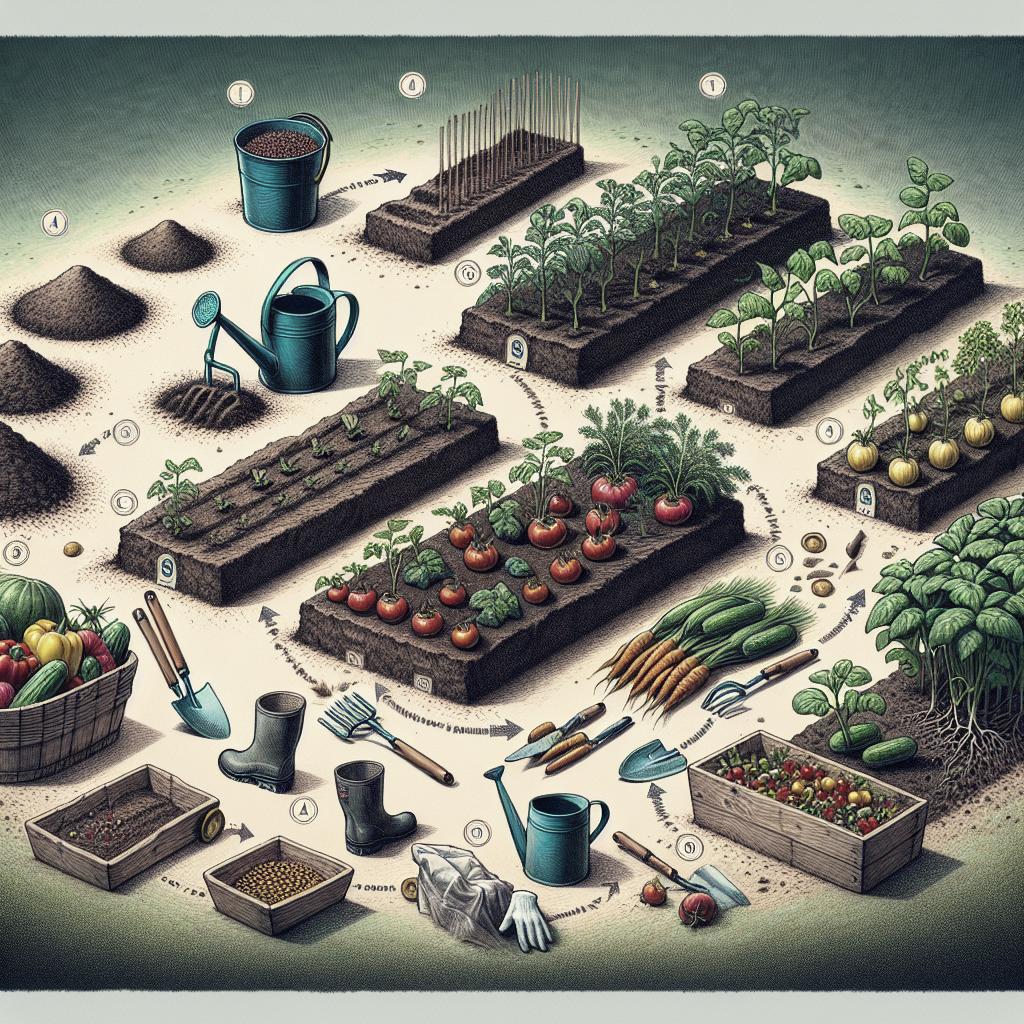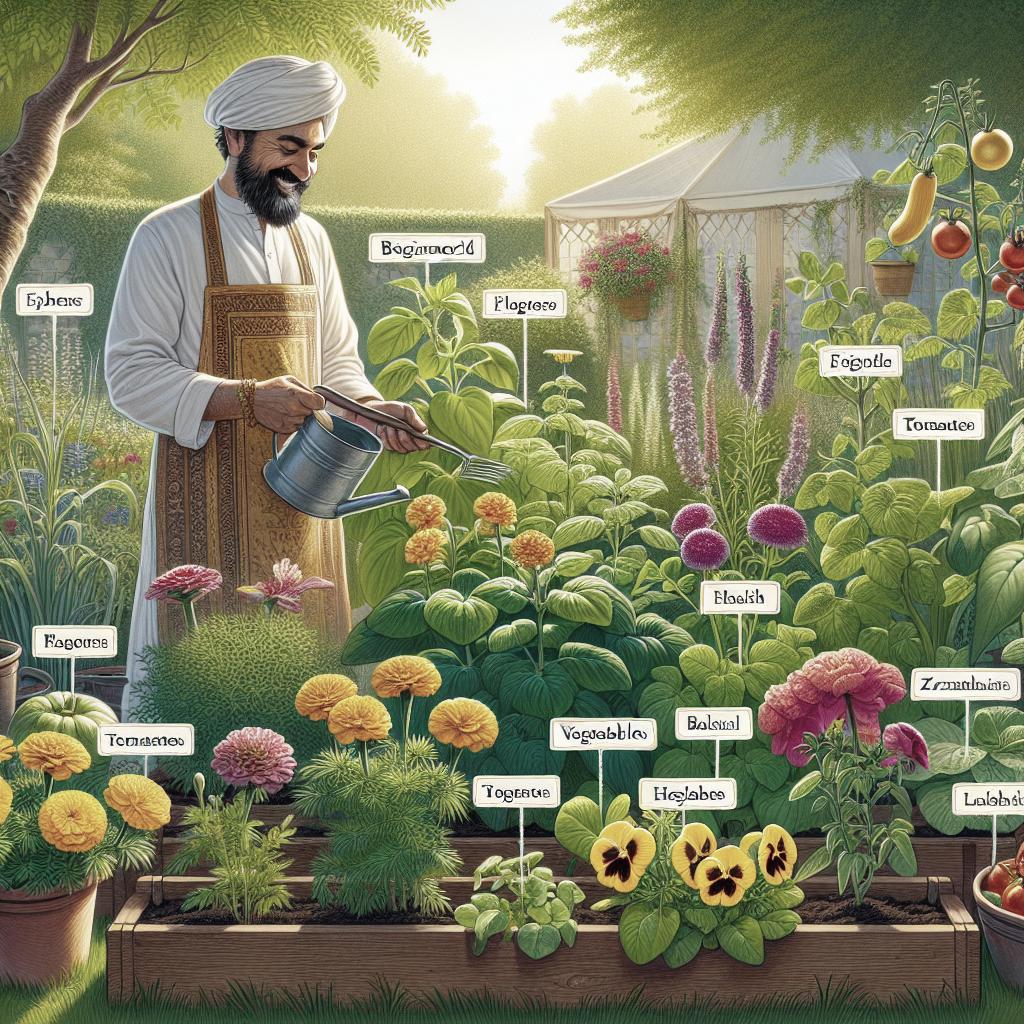“`html
Best Practices for Seed Starting
Starting seeds indoors is a rewarding gardening activity that allows you to get the jump on the growing season. By doing this, you can ensure the healthy growth of plants from the beginning and tailor your garden to your preferences. This guide will discuss the definition and purpose of indoor seed starting, why it is beneficial, and the supplies necessary for success. We’ll dive into the ideal timeline, detailed methods for sowing seeds both in cell trays and soil blocks, and the necessary steps for ensuring healthy seedlings are ready for transplanting.
What is Indoor Seed Starting?
Indoor seed starting refers to the process of germinating seeds indoors under controlled conditions. This practice allows gardeners to begin the growth cycle well before the outdoor planting season. By providing optimal conditions such as temperature, moisture, and light, seeds can develop into strong seedlings, ready to be transplanted to the garden once the weather permits.
This method gives a head start to the growing season by bypassing the limitations imposed by late frosts or unexpected weather changes. Indoor seed starting is a proactive approach to ensure that plants are given the best possible chance to thrive once they are introduced outdoors.
Why Start Seeds Indoors?
#1 To Get to a Harvest Faster
Starting seeds indoors means that gardeners can enjoy their harvest sooner since the plants have already been growing indoors while waiting for the outdoor conditions to become favorable. This sets a foundation for an extended growing period, leading to earlier mature plants and a potentially larger yield.
#2 To Get Proper Plant Spacing
With indoor seed starting, gardeners have greater control over plant spacing, ensuring that every seedling has enough room to develop and thrive. Proper spacing from the outset prevents future competition for nutrients, light, and water, which contributes to healthier and more robust plants.
#3 To Get Ahead of Weed Growth
Weed control is easier to manage when seeds are started indoors. By transplanting mature seedlings, they can quickly establish themselves in garden beds, leaving less room and resources available for weeds. This proactive step helps reduce time spent on weeding and enhances the plants’ growth conditions.
Recommended Supplies for Indoor Seed Starting
The key to successful indoor seed starting lies in having the right supplies. Essential items include seed trays or pots (plastic, recycled, or compostable materials), quality seed-starting mix, a light source (such as grow lights), and labels for marking plant varieties and dates.
Additionally, a heating mat ensures consistent warmth for heat-loving crops, while a small fan supports airflow to discourage fungus and encourage strong stem development. Lastly, having a misting spray or watering can be handy for ensuring the soil remains consistently moist without disturbing the seeds.
When Does it Make Sense to Start Seeds Indoors?
Seeds should typically be started indoors anywhere from six to eight weeks before the last expected frost date in your area. However, this timeframe can vary depending on the specific plant variety and local climate conditions.
Some plants, such as peppers and tomatoes, are more suited for early indoor starting due to their longer growing periods, whereas fast-growing crops like radishes or beans do well with direct sowing in the garden. Understanding the needs of each plant type is crucial in maximizing success.
When to Begin Indoor Seed Starting
To determine the best time to begin indoor seed starting, consider both the average last frost date in your area and the recommended indoor sowing period for each plant type. This information is typically available on seed packets or from local extension services.
By calculating the weeks before the last frost date when seeds should be started indoors, you can ensure that seedlings are adequately developed and ready for transplant by the time the threat of frost has passed.
How to Start Seeds Indoors
Successfully starting seeds indoors requires attention to detail and a consistent care routine. Begin with a high-quality seed-starting mix designed to support germination and healthy seedling growth. Sowing seeds at the correct depth and maintaining proper moisture levels are vital steps in this process.
Light is essential for the development of seedlings; position trays under grow lights set on a timer to mimic natural sunlight cycles. As the seedlings grow, gradually increase the intensity and duration of light exposure to promote robust and healthy plants.
How to Sow Seeds Indoors in Cell Trays (plastic, recycled, or compostable material)
#1 Moisten your soil mix.
Begin by thoroughly moistening the seed-starting mix before planting. This ensures that it is uniformly damp but not waterlogged, creating an ideal environment for seed germination.
#2 Fill your Cell Tray with Indoor Seed Starting Soil Mix
Fill each cell of the tray with the moistened soil mix, patting gently to remove air pockets. Take care not to compact the soil too tightly, which could hinder root growth.
[Continue with similar structured paragraphs for each step in “How to Sow Seeds Indoors in Cell Trays”]
How to Sow Seeds Indoors in Soil Blocks
#1 Moisten your soil mix
As with cell trays, begin with moist soil to ensure even distribution and moisture retention within the soil blocks. Proper moisture levels support optimal seed germination.
#2 Make your Soil Blocks
Using a soil block maker, create consistently sized blocks that provide ample space for root development. Soil blocks eliminate the need for individual pots, reducing plastic waste.
[Continue with similar structured paragraphs for each step in “How to Sow Seeds Indoors in Soil Blocks”]
Lessons Learned
In summary, indoor seed starting is a strategic and beneficial approach for gardeners looking to optimize their crop production. It offers distinct advantages, including accelerating the growth cycle, enhancing plant spacing, and effectively managing weed growth. Equipped with the necessary supplies and a clear understanding of the process, gardeners can nurture their seeds into thriving seedlings ready for the garden.
| Aspect | Details |
|---|---|
| What is Indoor Seed Starting? | Process of germinating seeds indoors in controlled conditions to ensure early plant development. |
| Why Start Seeds Indoors? | Faster harvest, proper plant spacing, ahead of weed growth. |
| Supplies Needed | Seed trays, soil mix, grow lights, labels, heating mat, fan. |
| When to Start | 6-8 weeks before last frost date, dependent on plant variety. |
| Methods | Cell trays and soil blocks with step-by-step guidelines. |
“`


